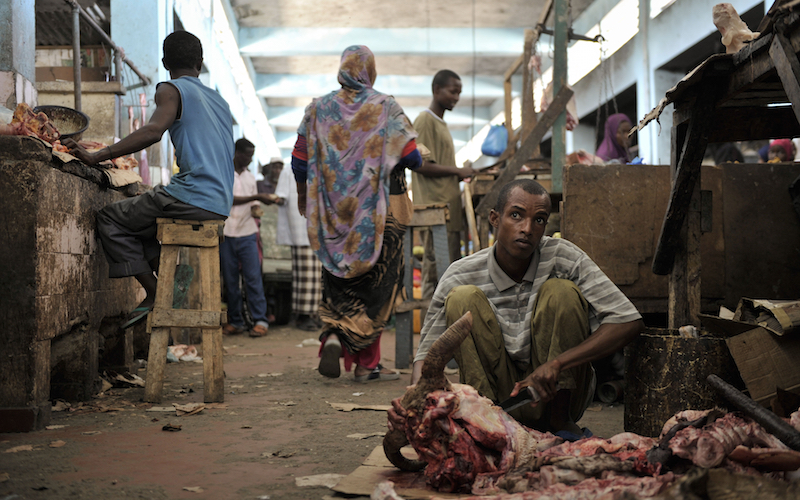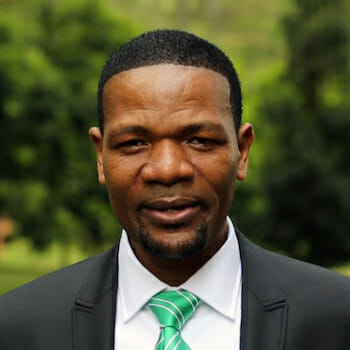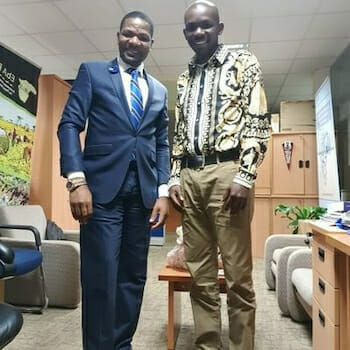
Financing Africa’s Development: Is it Time to Look Within?
The world is congregating in Paris for CoP21 with objective to securing a new climate deal. This is expected to provide the much needed framework for actualizing the 2030 Agenda on Sustainable Development adopted by world leaders just 3 months ago. This event comes just in time following the launch of the 2015 Emissions Gap Report which concludes that the INDC pledges by countries are far from enough and put the world on track for warming of around 3-3.50C by 2100 despite the global target for a below 20C scenario.
The implication is Africa’s adaptation costs could soar to $50 – 100 billion by 2050. How funds will be raised to ensure adaptation as well as keep temperatures from rising to dangerous levels is critical to the realization of the Agenda 2030 in Africa and beyond. Notwithstanding that international climate financing is expected to be among key items to be addressed by the Paris deal, there is consensus in the global community that financing development and especially the 2030 Agenda for sustainable development will require trillions of dollars, and public financing alone is inadequate. Continentally, this consensus is captured in a number of continental blue prints including the key AU Agenda 2063, and recent AMCEN Cairo declaration and the 2015 second Africa Adaptation Gap report (AAGR2).
For instance, Africa’s energy sector needs investment of $55 billion annually until 2030 to achieve universal access to electricity. On climate adaptation, Africa needs to invest between $50 to 100 billion annually by 2050. The ‘no-action’ option will be costlier. These two are amid other priorities such as transport infrastructure requiring investments of $11 billion annually, universal education $26 billion annually, healthcare $30 billion annually among others.
The needed imperative to look within
Regardless of this great need, Africa can no longer rely on external development finance alone. Official development assistance (ODA) to Africa is declining. Pledges from the G8 have been far from materializing, and where they come through Africa gets only a fraction of the money. A 2005 pledge by the G-8 to increase aid by $50 billion by 2010 (half of which destined for Africa) did not materialize. Instead, aid increased by $30 billion and only $11 billion went to Africa.
On climate financing, while developed countries pledged up to $100 billion annually to the UN’s green climate fund by 2020, at the moment, the GCF’s capitalization only reached about $10 billion at COP20, being pledges from only 10 countries. It is clear that relying on external aid alone is a risky strategy and Africa needs to look within.
The 2nd Africa Adaptation Gap Report (AAGR2) documented this imperative for climate financing and through analysis, concluded that Africa could raise up-to $3 billion from internal sources for adaptation. Countries should take steps individually and collectively under the AU to formulate task forces toward operationalizing recommendations of self-financing in this report. The rationale to look internally is that while Africa has largely relied on international financing for adaptation, the amounts and pace of disbursement has not reflected continental urgency. As a vulnerable region, the continent cannot afford to defer adaptation financing and should take pro-active steps internally even as it continues to lobby for international support. In addition, whatever funds are raised domestically can be leveraged as seed capital to unlock additional large scale funds.
A key area highlighted as a source of these internal funds is stymieing Illicit Financial Flows (IFFs), where the continent is losing an estimated at $50 – 60 billion annually. Cumulatively, Africa has lost amounts estimated at $1.2 – 1.3 trillion between 1980-2009 through IFFs. This is an amount that could have covered Africa’s external debt four times. These colossal losses lay the case that by stemming these IFFs as alluded by the 2015 joint AU/ECA high level panel report on IFFs, Africa can recoup enough resources to leverage international sources of funds and finance its development programs.
Targeted areas to stymie IFFs
Tax code reforms: Upgrading Africa’s tax code to reflect the continents growth will aid in sealing revenue losses out of lax taxation. Sensitivity analysis of projected average real GDP growth vis-a-vis potential tax revenues paints an increasingly optimistic picture for the continents resilient growth progress. From a baseline of 8% average growth and 12% tax share of GDP, it is projected that for average GDP growth of 8 – 9% and a linear increase in the tax share of GDP of between 12 – 17% between 2019 – 2030, low income countries in Africa can afford to dedicate a maximum of $248 million annually for resilience building initiatives. A similar scenario will generate about $233 million annually for recent middle income countries and up to $961 million per annum for upper middle income countries. Juxtaposing against needs for instance in the energy sector, where Sub Saharan Africa (SSA) needs to invest $55 billion annually to achieve universal access to electricity by 2030, tax reform to increase SSA tax-to-GDP ratio by 1% will generate 50% of the required amount.
Partnerships to improve tax administration: It is documented that an investment of $1 in capacity building in policies and strengthening tax administration institutions can return as much as $1,650. Key areas of focus to seal IFF loopholes should be improving regulatory oversight in tax administration and enhancing negotiating capacities with multi-national companies.
Fiscal reforms: Scraping unnecessary tax expenditures, such as incentives given to investors who are attracted by natural resources or a growing consumer base. These expenditures constitute a significant loss of revenue for the region ranging from 1.7 – 4% of GDP in individual countries, and create loopholes for fraud. Oil subsidies where 65% of subsidies in Africa benefit the richest 40% of households hence defeat the intended social impact, but potentially feed into corrupt cartels represents another target area of reform. Countries could recoup as much as $8 billion, for re-investment in health care, education, agriculture, and other inclusive sectors.
Optimize agro-value chains and recover food: In a continent where about 240 million people go to bed hungry, and food imports exceed exports by 30%, Africa loses as high as 6.6 million tons of grain annually, enough to meet annual calorific needs of approximately 31 million people, due to degraded ecosystems. It also loses food worth $48 billion annually as post-harvest losses. When juxtaposed with Africa’s $35 billion annual food import bill, which is also an avenue for fraud, recovering these losses would essentially eliminate the need for imports without increasing production, while injecting an extra $35 billion to capitalize other sectors of the continent’s economy. Optimizing the agro-value chain by embracing EBA approaches and linking these to value addition in a continuum can not only save Africa up to $35 billion in annual food imports but catalyze an agro-economy that could be valued at $1 trillion by 2030.
A practical area where the recouped $35 billion could be invested is in lowering risks in the agro-sector to encourage commercialization. Despite the sectors significant potential in poverty reduction, job-creation potential and enhancing inclusive, sustainable growth, most commercial banks consider it a high risk sector, and are therefore averse to it pegging very high interest rates. This greatly hampers productivity through limiting private sector engagement. Governments could use recouped funds and working with the private sector and the development partners develop appropriate de-risking tools to reverse this scenario.
As an example, providing integrated credit guarantees to commercial banks tied to capacity building and farmers using low-risk EBA approaches to enhance chances of successful yields. Commercial loans can be issued to farmers who certify these requirements, including women farmers at low/affordable interest rates considering the 3-pronged de-risking tool – security deposited by governments; training and capacity building offered by development partners; Low risk EBA approaches used by farmers.
For instance, in Kenya, a partnership between AGRA, the government and IFAD established a credit guarantee scheme with a local commercial bank. Through this scheme, the partners placed $5 million in the bank to leverage $50 million in lending, and the results proved the effectiveness of this model.
Optimize diaspora financing: Remittances from Africans in the diaspora are rising. The 2013 valued at $32 billion, or around 2% of GDP are rise to over $41 billion in 2016. However, the amount of money hemorrhaging as transfer charges is colossal. Charges on remittances to Africa are at 12%, well above global average of 7.8%. This translates to approximately $1.4 billion annually that Africa loses. By reforming financial governance and increasing efficient access to financial services in Africa, and improving competition by eliminating oligarchs and increasing transparency in transfer fees among service providers in the international money transfer market, through appropriate global policy, private sector action and information management (as simple as an AU run website posting transfer costs for different service providers), will drive down prices. Africa can then recoup these finances, and bring its total diaspora portfolio to $42 billion annually by 2016.
With these remittances creating additional opportunities could be optimized for recipients to invest in adaptation projects in the local economy and spur further growth. This should be a challenge to the financial sector, the banks which could provide credit/loan products based on remittance flows and account balances of clients who are beneficiaries or recipients of remittance. Such loans could be tied to adaptation and entrepreneurial exploits to ensure specific contribution to economic growth in respective countries.
Implement in full recommendations of the AU high level panel: The 2015 joint AU/ECA high level panel report on IFFs makes recommendations on how IFFs can be stemmed by taking targeted actions on the main contributors – the commercial sector (the largest contributor at 60% through profit shifts and tax evasion by corporates), organized crime (about 33%) and public sector activities, with corruption playing a key role in facilitating these outflows. The recommendations are cross cutting broadly covering appropriate action that can be taken by any victim country in African countries should individually and collectively through the AU, develop an implementation framework to ensure full implementation of these recommendations. A starting point can be formation of task forces at country, regional and continental level to come up with steps to operationalize these recommendations.
Conclusions
As COP21 starts, climate financing will be a critical item on the menu. While Africa should continue to lobby for international support, a potential source of funding for adaptation that the continent should pursue collectively and aggressively including through partnerships with the larger G77 is curbing IFFs. Such resources will be essential in developing climate change resilient pilot projects, enhancing capacity building, catalyzing more innovative sources including private sector financing, all toward financing Africa’s climate resilient development. Africa urgently requires funding for climate resilient development and plugging IFFs and other leakages is a good starting point.


